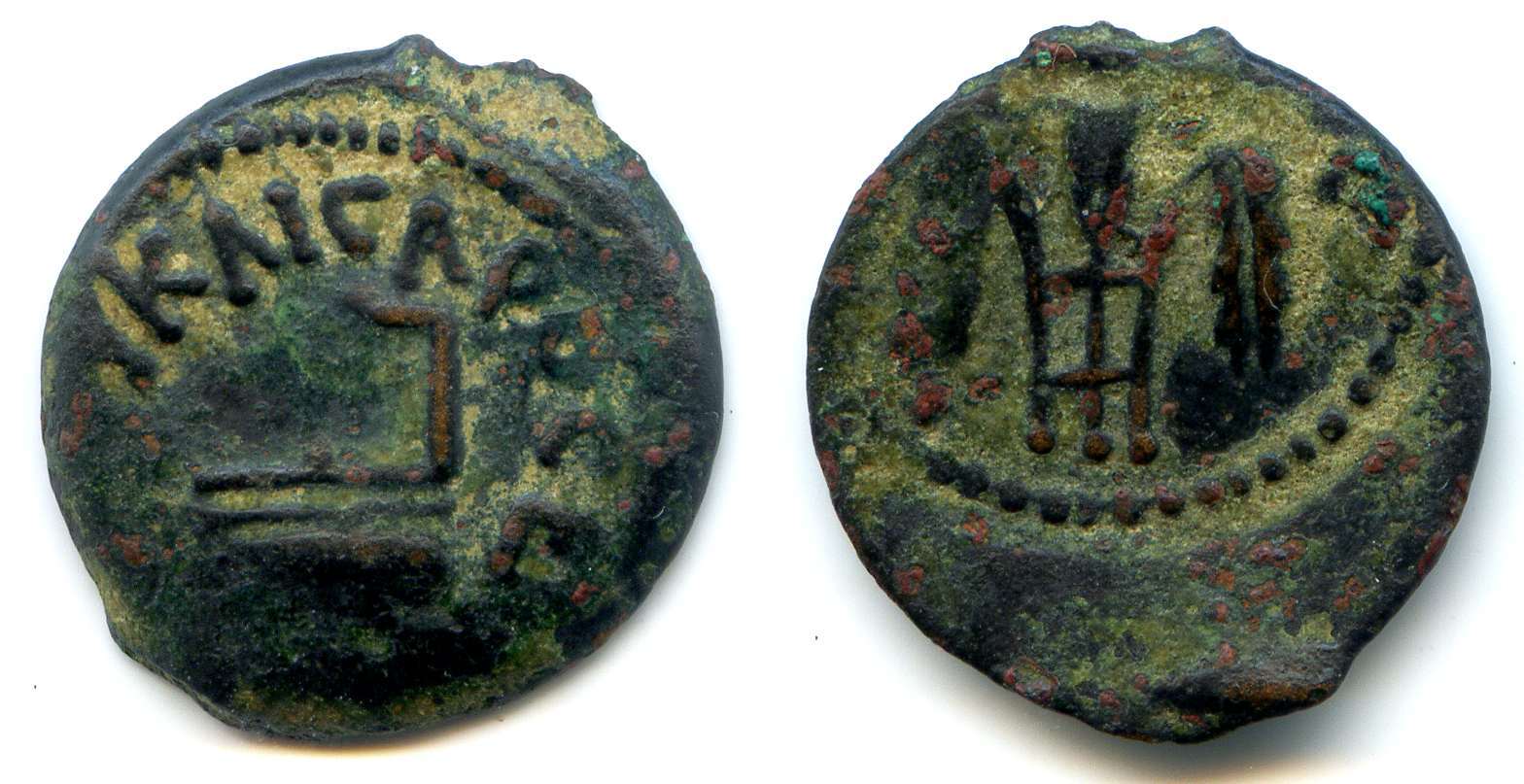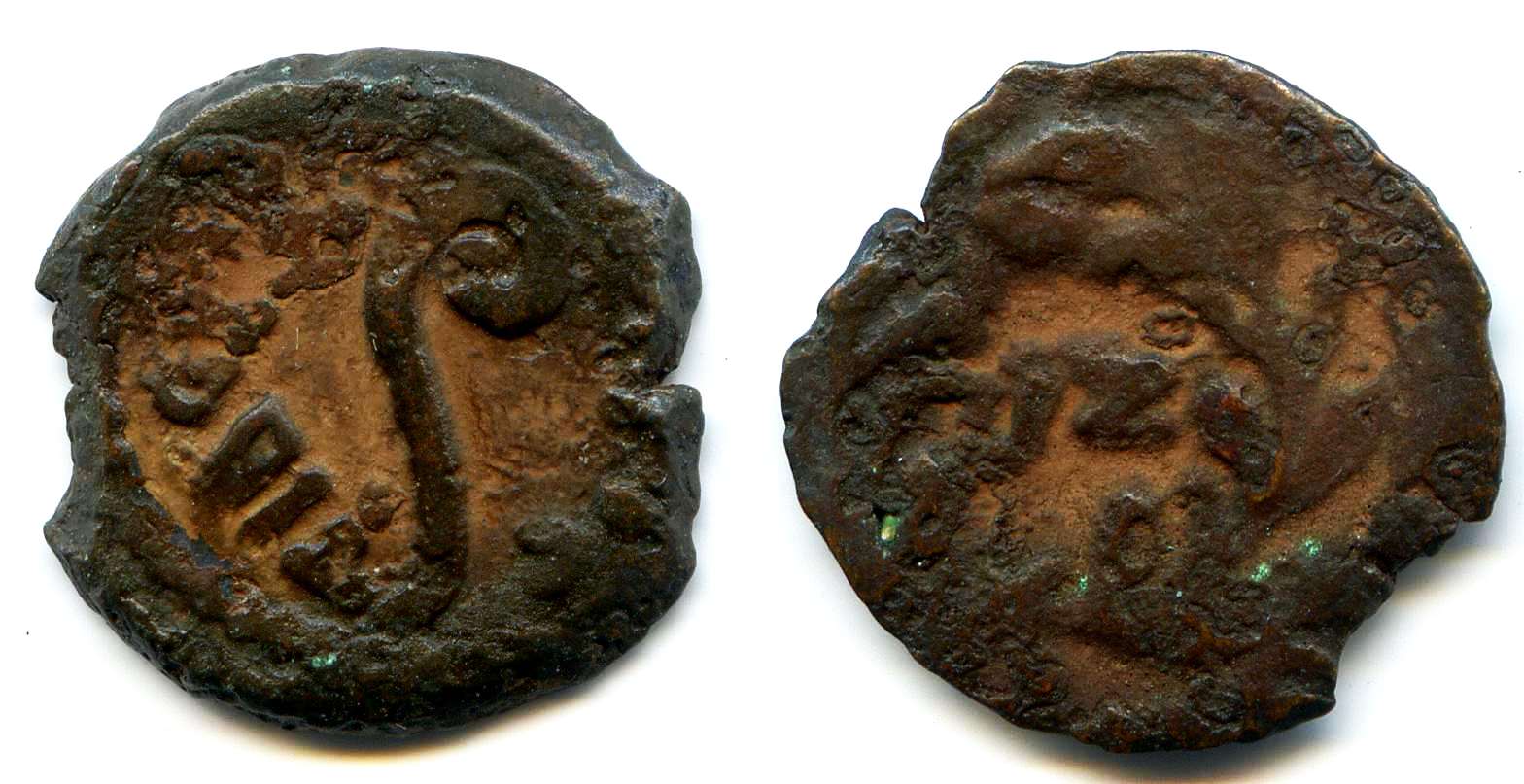Pontius Pilate
Roman Procurator of Judea, 26-36 A.D.

Copper Lepton, 15 mm, struck 29 AD
O: Libation ladle ("simpulum") used in Roman religious
ceremony.
R: Three ears of barley, the outer two ears drooping.
Legends are in Greek, naming the Emperor Tiberius on one side and the Empress
Julia on the other.

Copper Lepton, 15 mm, struck 30 AD.
O: Curved staff ("lituus") used in Roman religious ceremony.
R: Date (Year 17) in Greek, within wreath.
Legends are in Greek, naming the Emperor Tiberius on one side. It is
interesting that on coins for Judea, Pontius Pilate chose to portray a pagan
religious implement. It demonstrates either a complete lack of knowledge
of Judean religious practices, or a deliberate attempt to ignore them.
Pontius Pilate, the fifth Roman procurator (governor) of Judea, condemned Jesus to death. Appointed under Emperor Tiberius, Pilate's years in office were marked by conflict with the Jews. At one point he is reported to have introduced votive images of the emperor into Jerusalem.
In the Gospels, Pilate is portrayed as officiating at the trial of Jesus.
Although believing him innocent, he yields to the desires of the crowds,
releasing Barabbas and sending Jesus to his execution. According to Christian tradition,
Pilate and his wife were later converted to Christianity and martyred. Another
version holds that he committed suicide in Rome.